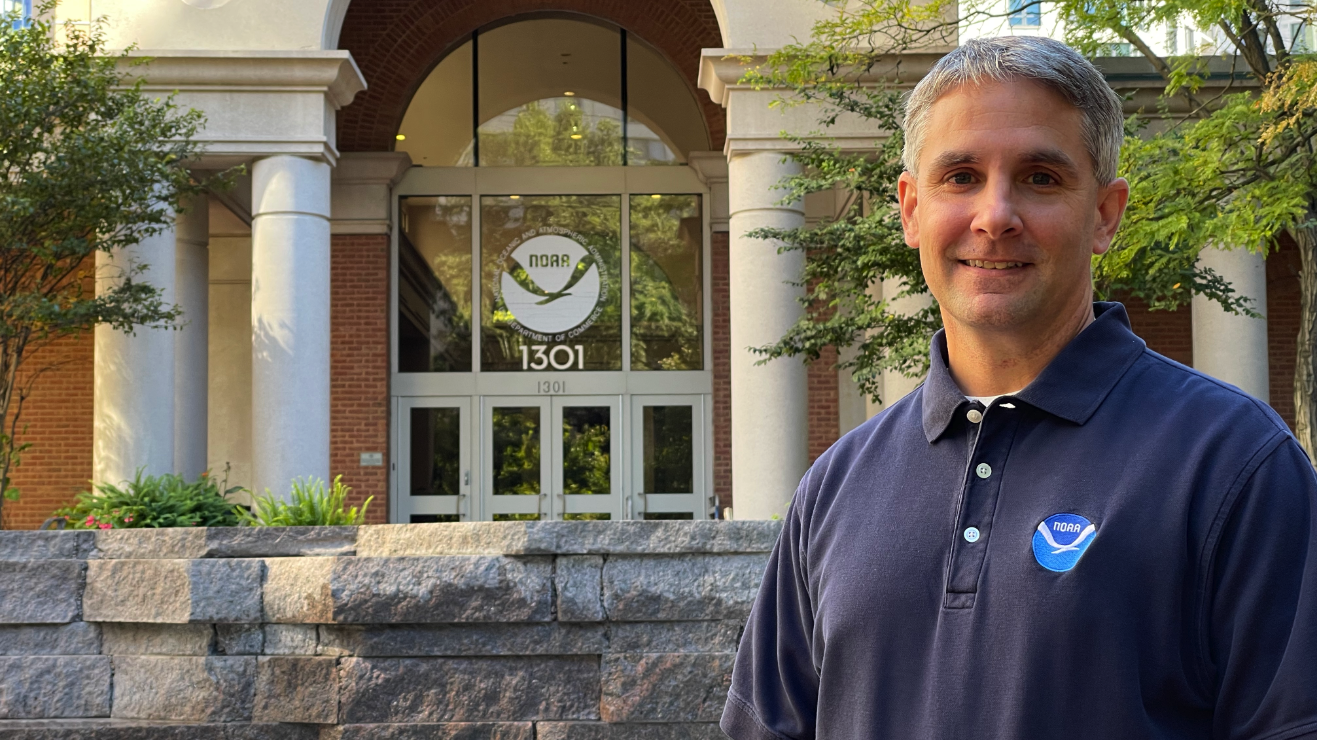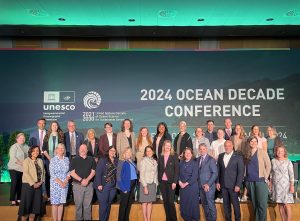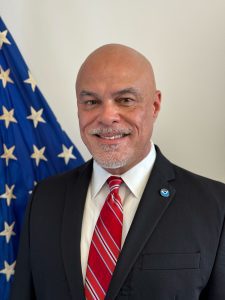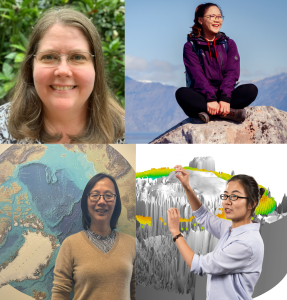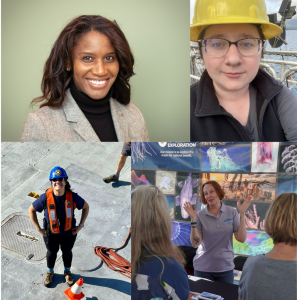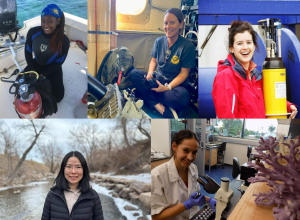In October 2022, Steve Thur, Ph.D., a nationally recognized leader in coastal science and management, began his tenure as the Assistant Administrator for the NOAA Oceanic and Atmospheric Research NOAA Research. In this role, Thur will oversee research activities at 10 laboratories and six research programs that focus on understanding the complex systems that support our planet. Prior to joining NOAA Research, Thur’s career with NOAA focused on applying service through science in order to manage, restore, and conserve marine resources. We had the opportunity to sit down with Dr. Thur to discuss what he sees for NOAA Research in the near future and beyond, as well as learn about some fun facts about himself:
Q. Why did you want to join NOAA Research as its Assistant Administrator?
When I think about the challenges that society faces today and in the coming century, of which many are intricately tied to climate change, NOAA Research’s mission addresses so many of those challenges. The breadth of the NOAA Research mission is very impressive due to the extensive opportunities it provides to explore and solve these societal challenges. Before I started at NOAA Research, I served as the director and deputy director of NOAA’s National Centers for Coastal Ocean Science NCCOS from 2013 to 2022. Prior to joining NCCOS, I was the coordinator of NOAA’s Coral Reef Conservation Program. During my time at NOAA, I have partnered with NOAA Research labs and programs to address some of the most pressing challenges along our coasts, and I have always been impressed with the ingenuity and passion of the staff. I am excited and humbled to be joining these dedicated professionals in service to the American public.
Q. How did your educational experience influence your career?
As an undergraduate student I had the opportunity to participate in a marine research trip to Belize. It was on this trip that I had two major realizations that impacted which career path I followed. The first was that biochemistry was not for me and was not a career I wanted to pursue. The second was when I first saw the impacts of well-enforced marine protected areas on surrounding ecosystems and coastal communities. Seeing the impacts of marine protected areas on coral reef ecosystems inspired me to learn more about how these types of practices can benefit both ecosystems as well as local communities. There was one class from my undergraduate education that I can mark as being particularly influential to my career. This was a discussion based economics class that focused on the economics of social problems. This course introduced me to the complexity of societal issues and how there is never a one-size-fits-all solution. After I graduated with my bachelor’s degrees in biology and economics from St. Mary’s College in Maryland, I went on to earn my Ph.D. in marine policy from the University of Delaware’s Graduate College of Marine Studies. My Ph.D. research continued my focus on the intersection of marine biology and economics by examining sustainable financing mechanisms of coral reef marine protected areas in the Caribbean. The combination of this undergraduate class with my experience in the field inspired me to pursue a career in coastal management, restoration, and conservation of marine resources. I wanted to find a way to apply science to various difficult challenges facing coastal communities and ecosystems.
Q: Service through science has been a prevalent theme throughout your career. How were you introduced to this idea and how do you see it being implemented at NOAA Research?
There is no clear moment that I can remember for when I was introduced to this idea. The mindset of service through science became clearer as I became more familiar over time with NOAA’s mission. NOAA has a mantra of service, science, and stewardship which has been used for over a decade. To me it seemed like these three pillars were meant to be separate entities, yet having been a part of multiple science organizations, I believe they are all one in the same. Everything that we do as a government organization can be, and should be, seen through a public service lens. When we conduct science with an eye toward serving the public, we can produce scientific products that directly serve the American public in useful ways. Throughout my career I have had a particular emphasis on how both the biophysical and social sciences are used to sustain coastal ecosystems and the vibrant human communities that depend upon them for livelihoods, recreation, and as a place for connecting with nature. I look forward to taking this focus and applying it at NOAA Research to serve the American people.
Q: Science is most accessible when it is communicated in clear and interesting ways. What do you think are the most important aspects of science communication for NOAA Research to focus?
NOAA Research is doing amazing science and is leading the way in answering some of the challenging climate and other issues we all face. Our science needs to be communicated clearly and in interesting ways so that the end users of our research understand the meaning of our research and how it benefits them personally. There are three main communication pillars that I hope to build within NOAA Research. The first is the practice of storytelling. Some of the most effective ways of communicating science involve storytelling. There is power in being able to tell a compelling story. Storytelling has been around since the beginning of human history and has been a primary way of passing on information to different groups and generations. Telling stories about our research that are memorable and relatable are more likely to be acted upon. Story telling almost always brings research back to the human scale and how it can impact real people in their lives. For example, while scientific publications are vitally important, there needs to be more information extended beyond those publications to target different audiences on different platforms. Technical writing is written for a very niche group of people who already have deep understandings of the topics being discussed. Using storytelling, we can take these scientifically dense publications and translate them into concepts everyone can understand and use in their everyday decision making. The second communication pillar is clearly defining the audiences we hope to reach. Once our audiences are well defined, we can choose which channels are the most effective in reaching them. From there we can format our content to be the most accessible and impactful at communicating our message. This ties nicely into the third pillar which is focusing on who is doing the communicating. It is always good for scientists to be able to communicate their research, but I also want the end users of our science, who are most familiar with our content, to also be empowered to help communicate our research to a broader audience. Hearing from both the producers of the research and those using that research to make decisions is a powerful combination.
Q: NOAA Research serves the diverse population that is the United States with our science. How do you see NOAA Research focusing on diversity and inclusion in the years to come?
When focusing internally on diversity, equity, and inclusion, the work that any organization produces is better when there is a multitude of perspectives. I want to continue building an environment at NOAA Research where our workforce feels comfortable in the work environment, as well as confident that their voices are heard and valued. The more diverse perspectives we have, the faster, and perhaps more accurately, we will find solutions to the challenges we are researching. I believe that workforce diversity goes far beyond race, gender, and ethnicity. I think the concept also includes the geography of where the workforce is stationed, age, personal and professional backgrounds, and more. The more diverse our workforce becomes, the stronger our research and organization will become. When focusing externally, it is important to make sure that NOAA science equitably serves the American population. Communities may have varying capacities for engaging with us and our products. Therefore, we may need to change our practices to improve that engagement and improve accessibility to our research and data. We will need to focus on how we communicate our science to best provide for the diverse communities we represent. Is information most accessible in person, virtually, by video, in a webstory, or through social media? What time of day are we reaching the most diverse audience? Are we reaching these people in memorable and engaging ways that can be useful to them? These are the questions we have to ask ourselves as scientists and communicators who serve the American people. We work to provide our nation with the most up to date and accurate data about our atmosphere and oceans, so as an organization we need to make sure what we are producing is valuable to everyone and not just select groups.
Q: NOAA is partnering more frequently with other organizations and businesses to help achieve its mission. How do these partnerships help NOAA Research in delivering our science information and products to those who benefit from this knowledge?
There are two reasons for any organization to partner on an initiative. Either the capacity of the organization is insufficient to take on the task, or the organization does not have capability needed to complete the initiative. As an organization, NOAA is great at most elements necessary for our research, but in some instances we need help via partnerships to produce the highest quality product, either by tapping into the capacity or capability of those partners. Partnerships can include other research entities that help us boost the number of scientists to complete a research initiative, or it could mean partnering with a technology company that can help us design cutting edge technology. Partnerships can also include entities that can better communicate our results to broad audiences in impactful ways by developing specific products that are out of our scope of operation. By partnering with other entities, we can get more done with the taxpayer money with which we have been entrusted. While partnering with other science organizations is often critical, the partnerships I find most impactful are those with the end users of our products. This is something I hope to expand as the Assistant Administrator of NOAA Research. Since NOAA Research addresses a plethora of issues that impact the American public daily, I think it is important that we hear from these people so we ensure our products are accessible and useful. The potential end users of our information or products should have a role in the design of the product so it can best suit and serve them.
Q: A final question about life outside of work. We heard that you have a love for soccer and are certified as a collegiate soccer referee. What is the biggest match you have refereed?
The answer that I am going to give you today is much different from the answer I would have given you five years ago. Five years ago, I would tell you about the high profile games with the biggest crowds and the most publicity. However now I think the biggest matches I referee are those in which some of the players are playing their last college game. These types of matches are the biggest matches to me because many of these players will not have an opportunity to play high-level l soccer again after this last match. The emotion these games have for these seniors is so intense, it is really special to be able to be a part of that environment and part of the game. These are the games that are the most memorable for the people involved. No one really remembers their first college soccer game, but everyone remembers their last.
